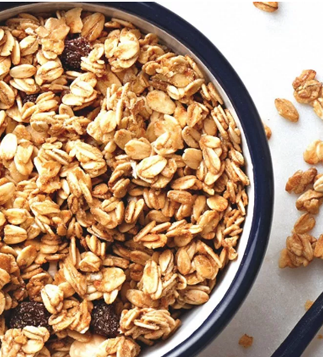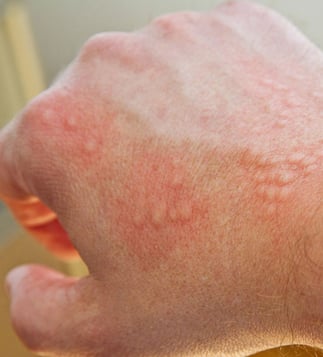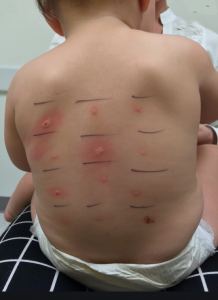Can’t Tolerate Oats? Could it be an Allergy to Avenin?
 Oats contain a protein called avenin, which can cause an allergic reaction in some people.
Oats contain a protein called avenin, which can cause an allergic reaction in some people.
- Beth Sissons, medicalnewstoday.com 1
A person who has eaten oats can sometimes feel unwell. It could be that they have a gluten intolerance. Around 1 out of 100 people worldwide have a serious form of gluten intolerance called celiac disease. Although oats do not contain gluten, processing oats alongside foods that contain gluten can lead to cross-contamination.
It could also mean that a person may be allergic to the avenin protein in oats. This article looks at the symptoms of an oat allergy, as well as some diagnosis and treatment options.
Symptoms
The symptoms of an oat allergy can range from mild to moderate and affect the skin, gut, and airways. Severe food allergies can lead to anaphylactic shock, which can be life threatening if the person does not receive immediate treatment. Symptoms of anaphylactic shock may include:
- wheezing, which can resemble an asthma attack
- a tight chest
- a swollen tongue and throat, which restricts the airways
- noisy breathing, especially when inhaling
- a sudden decrease in blood pressure, which can result in shock
- dizziness and confusion
- collapse or loss of consciousness
The symptoms of anaphylactic shock typically appear within 1 hour of exposure. If a person has any signs or symptoms of anaphylactic shock, they need immediate medical attention.
 Immediate allergic reaction
Immediate allergic reaction
Symptoms of an oat allergy in adults, babies, and children include:
- hives
- a flushed face
- a red, itchy rash around the tongue, mouth, or eyes, which can spread to other parts of the body
- mild swelling of the lips, eyes, or face
- an itchy throat and mouth
- watery eyes
- a runny or stuffy nose
- sneezing
- diarrhea
- vomiting
- bloating
- stomach cramps
These symptoms indicate an immediate food allergy and can appear shortly after eating. Most food allergy symptoms occur within 2 hours of consuming the allergen.
Delayed Allergic Reaction
Sometimes, there can be a delay in the symptoms of a food allergy, which means that a reaction might not appear immediately after consuming the allergen. There may be a 4–6 hour delay in reactions. Sometimes, it can take even longer. Delayed signs and symptoms in babies and children can include:
- eczema
- reflux
- stunted growth
- constipation
- diarrhea
- swelling of the small bowel
- significant stomach pain
- frequent crying or distress
_________
Food protein-induced enterocolitis syndrome (FPIES) is a delayed food allergy reaction. This produces severe gastrointestinal symptoms that tend to develop around 2–6 hours after consuming an allergen. FPIES mostly affects infants consuming certain foods for the first time or going through weaning. Symptoms appear similar to those of a serious viral or bacterial infection. They include:
- frequent vomiting
- bloody diarrhea
- dehydration, as a result of vomiting and diarrhea
- If a person has any of these symptoms, they need immediate medical help.
Treatment for FPIES includes intravenous rehydration.
Diagnosis
There are multiple methods an allergist can use to diagnose an oat allergy. These include:
 Tests
Tests
An allergist can test people for an oat allergy. They may use one of the following methods:
- Skin prick test: An allergist will prick or inject the skin with a small amount of the diluted allergen. In this case, it would be oats.
- Blood test: If it is not possible to take a skin test, an allergist may take a blood test. These can be less sensitive in identifying allergies than skin tests.
- Patch test: This can help identify delayed food allergies. An allergist will apply a small amount of the allergen to a patch. The person will wear the patch on their skin for 48 hours to see if it causes a reaction on the skin.
- Babies under 6 months old will usually not have a skin prick test.
Elimination Diet
An allergist may recommend an elimination diet for children. This involves eliminating all oat-based foods and products from the diet for 1 week and monitoring the symptoms to see if they improve. If the symptoms do improve, it is likely that the person is allergic to oats.
Oral Food Test
Another way of testing for a food allergy is to take an oral food test. This requires a person to eat a small amount of oats under carefully monitored conditions.
An allergist will gradually increase the amount to see if it causes any reaction. As soon as the oats cause any symptoms of an allergic reaction, the allergist will stop the test.
If the person has no reaction, the allergist will rule out oats as the cause. They may also give the person a placebo to make sure the results are accurate.
Treatment
Anyone with an oat allergy should avoid consuming oats and oat-based products. To check for cross-contamination, people should check product labels for phrases including “might contain oats” or “manufactured in a facility that uses oat ingredients.”
An allergist may prescribe allergy medications, such as antihistamines, to help relieve any mild symptoms of an allergic reaction.
They may also prescribe an epinephrine auto-injector, which delivers adrenaline to the body. Manufacturers have designed epinephrine auto-injectors specifically for safe use in infants and toddlers.
People may need to use their epinephrine auto-injector if they have a severe allergic reaction. They will then need immediate medical attention.
When to See a Doctor
If a person has any symptoms of a food allergy and suspects that they have an oat allergy, they can see their doctor or an allergist.
A doctor or allergist will be able to carry out tests to determine whether or not oats are causing the allergic reaction.
If a person experiences any severe symptoms, anaphylactic shock, or the symptoms of FPIES, they need immediate medical attention.
What to Avoid
A person with an oat allergy may need to avoid certain products. These include certain:
Foods
People with an oat allergy will need to take care to avoid any oat-based foods or drinks. These may include:
- oatmeal or porridge
- oat milk
- muesli
- granola
- flapjacks containing oat flour
- oat cookies
- any hot beverage containing oat milk
- oat bread
- oatcakes
- oat bran
A person may also need to check the ingredients in cakes, muffins, and cookies, as some of these can contain oats.
Some beers can also contain oats, so a person should check with the provider before consuming.
Cosmetics
Some moisturizers and creams contain oat proteins. People with an oat allergy may therefore need to avoid topical products containing oats, such as certain cosmetics or oatmeal baths. One older study from 2007 found a high level of sensitivity to oats in infants who had atopic dermatitis and were using oat-based topical products. However, a 2012 study in the journal Clinical, Cosmetic and Investigational Dermatology found that personal care products that contained oatmeal had a very low potential for allergenic sensitization. During a 3 year period, consumers of 445,820 products did not report any allergies.
Oat Alternatives
People with an oat allergy can replace oats with other cereals and grains. These can include:
- sorghum
- millet
- corn
- polenta
- rice
There are many replacements for oat-based breakfast meals. For example, people can make porridge out of millet instead, or they can soak chia seeds in milk or water to create a thick consistency as a replacement breakfast dish.
Summary
Some people have an allergy to the proteins in oats, which are called avenins. Symptoms of an oat allergy can range from mild to moderate. If a person suspects that they have an oat allergy, they can see an allergist, who will be able to carry out tests to diagnose it. If the person does have an oat allergy, they will need to avoid any oat-based products. If they experience a severe allergic reaction from oats, they need immediate medical attention.
If a person tests negative for an oat allergy but still has a reaction to oat-based products, they may have an intolerance or allergy to gluten. Eating oat products with the label “gluten-free” can ensure that there is no cross-contamination from other products.













